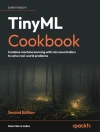In 1984, additive manufacturing represented a new methodology for manipulating matter, consisting of harnessing materials and/or energy to create three-dimensional physical objects. Today, additive manufacturing technologies represent a market of around 5 billion euros per year, with an annual growth between 20 and 30%. Different processes, materials and dimensions (from nanometer to decameter) within additive manufacturing techniques have led to 70, 000 publications on this topic and to several thousand patents with applications as wide-ranging as domestic uses.
Volume 1 of this series of books presents these different technologies with illustrative industrial examples. In addition to the strengths of 3D methods, this book also covers their weaknesses and the developments envisaged in terms of incremental innovations to overcome them.
Table of Content
Acknowledgments ix
Foreword xi
Preface xv
Introduction xxix
Part 1 From Spectacular Applications to the Economic Market of Additive Manufacturing 1
Introduction to Part 1 3
Chapter 1 Some Significant Examples 7
1.1 Introduction 8
1.2 Maritime, military, aerial and spatial applications 11
1.3 Conception: art and new domestic applicative niches 14
1.3.1 Art and additive manufacturing 17
1.3.2 Archaeology, museum restoration, reproduction 19
1.3.3 Construction sector 21
1.4 Mechanical parts 23
1.5 Land transport 28
1.6 The question of spare parts 32
1.7 Toys for the young and the ‘not-so-young’ 33
1.8 ‘Traditional’ medical applications 34
1.9 Animation 39
1.10 Scientific applications 40
1.10.1 Optics 40
1.10.2 Chemical and process engineering 41
1.10.3 Complex structures 42
1.10.4 Toward the infinitely small 43
1.11 Nanometric origami 45
1.12 Conclusion 47
1.13 Bibliography 49
Chapter 2 Integration of Additive Manufacturing Technologies into Society 69
2.1 Introduction 70
2.2 Markets and application domains of 3D printing 72
2.2.1 Markets 72
2.2.2 Principal application niches 76
2.3 Growth dynamics 80
2.4 Studies on the dynamic of growth 84
2.4.1 Convergence 84
2.4.2 ‘Attractiveness’ of additive manufacturing technologies 87
2.4.3 Possible positioning of the industry 132
2.5 Toward a certain stabilization: The dynamics of innovation 140
2.6 Conclusion 146
2.7 Bibliography 152
Part 2 3D Processes 175
Introduction to Part 2 177
Chapter 3 Processes, Machines and Materials 181
3.1 Introduction 183
3.2 Stereolithography 188
3.2.1 History of 2D1/2 processes 188
3.2.2 Other techniques developed since 1984 191
3.2.3 Light-matter interaction and space-resolved polymerization 193
3.2.4 Consequences 197
3.2.5 Families of materials used 201
3.2.6 Layer implementation 207
3.2.7 Coupling of polymerized surface generation and volumetric reduction 207
3.3 Process of wire fusion 207
3.3.1 FDM or FFF materials 211
3.3.2 Adhesion 212
3.3.3 Synthesis 214
3.4 Sheet or powder gluing process 215
3.4.1 Bi-material process (SDL) 215
3.4.2 Variant using powders: 3DP Process 217
3.4.3 Process using a cross-linkable polymer (SIR, for ‘Soluble/Insoluble Reaction’) 218
3.4.4 Synthesis 223
3.5 Powder fusion/sintering 225
3.5.1 Materials 227
3.5.2 Energy sources 228
3.5.3 Physicochemical aspects and constraints linked to the process 228
3.5.4 Simultaneous contribution of matter and energy 233
3.5.5 MPA process 235
3.5.6 Synthesis 236
3.6 Conclusion 238
3.7 Bibliography 245
Conclusion 265
Index 275
About the author
Jean-Claude André, CNRS, France.












